Accessible Entrances: Minimum Number [§206.4]
At least 60% of public entrances must be accessible in new construction, in addition to entrances directly serving tenancies, parking facilities, pedestrian tunnels and elevated walkways. “Public entrances” include all entrances except those that are restricted or that are used exclusively as service entrances.
Public Entrances Required to be Accessible
Recommendation: Access should be provided to a primary entrance for greater usability and convenience (as is required for residential dwelling units).
Entrance Landings
Entrance landings must accommodate door maneuvering clearances as well as landings for provided ramps.
Entrance Landing
Security Barriers [§206.8]
Accessible route adjacent to security screening device
Security bollards and screening devices at accessible entrances cannot obstruct accessible routes or accessible means of egress. Accessible routes can be adjacent to metal detectors and other screening devices that do not accommodate all people with disabilities, but the route must be located so users can maintain an equivalent level of visual contact with personal items.
Restricted Entrances [§206.4.7]
If entrances are restricted to certain occupants on a controlled basis, at least one must comply in addition to public entrances required to be accessible. This applies to those entrances where entry access is verified by security personnel and is strictly limited to certain occupants, but no one else, including guests or companions of authorized individuals. All other types of entrances, excluding service entrances, are considered “public entrances” under the Standards, including employee-only entrances requiring keys or access cards or codes but that lack the level of security of restricted entrances.
Two-Way Communication Systems [§230 and §708]
Where two-way communication systems are provided to gain entry to a facility or to restricted spaces, they must include visual and audible signals to accommodate people with hearing, speech, or visual impairments. This applies to all entrances equipped with such systems, including those that are inaccessible. Lighted signals should have labels to indicate their meaning. If handsets are provided, cords must be at least 29” long. Control buttons and other operable parts must comply at those systems located at accessible entrances.
Alterations [§206.4 and §202.4]
In alterations to existing facilities, accessible entrances are required:
-
if an existing entrance is altered (and no fully compliant entrance already exists);
-
when entrances are newly added to a facility or as part of a facility addition; or
-
as necessary to achieve an accessible path of travel to primary function areas that are altered (unless disproportionate to the cost).
When alterations are made to primary function areas, a connecting accessible path of travel from site arrival points is required to the extent that it does not exceed more than 20% of the project cost. Achieving an accessible entrance should be the top priority in providing the accessible path of travel according to regulations implementing these Standards.
Qualified Historic Facilities
These requirements also apply when alterations are made to qualified historic facilities. However, if making a public entrance accessible would threaten or destroy a facility’s historic significance (as determined by the appropriate State Historic Preservation Official or Advisory Council on Historic Preservation), access can be provided to a non-public entrance instead. A notification or remote monitoring system is required where such an entrance is locked. (§206.4, Ex. 2)


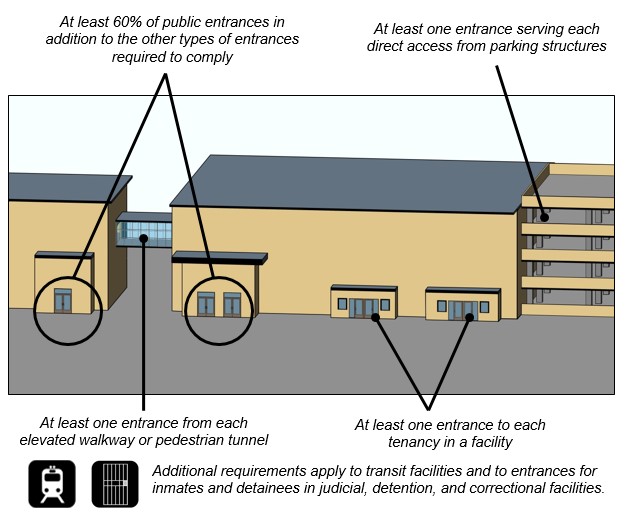

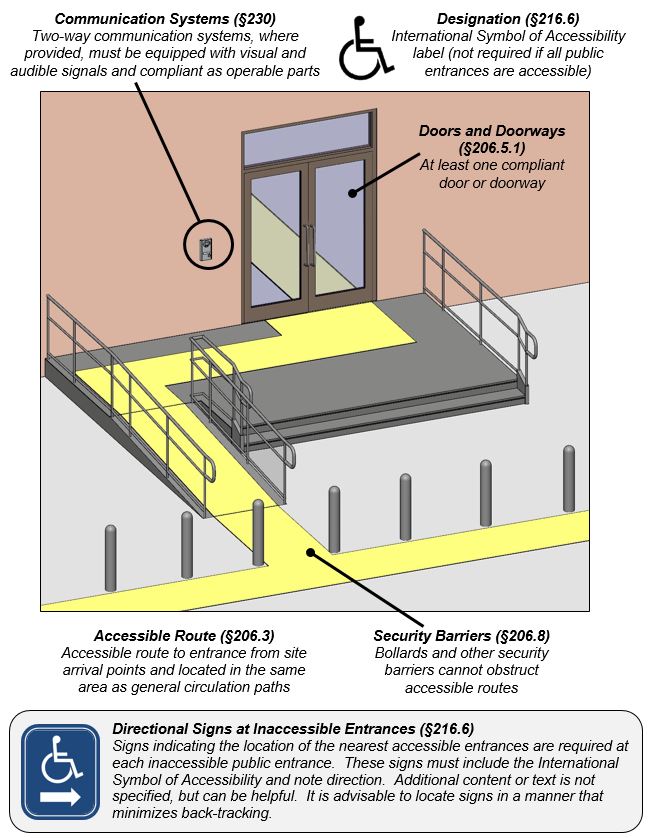
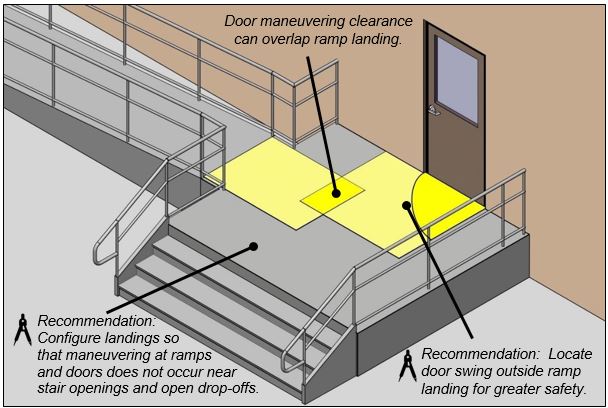
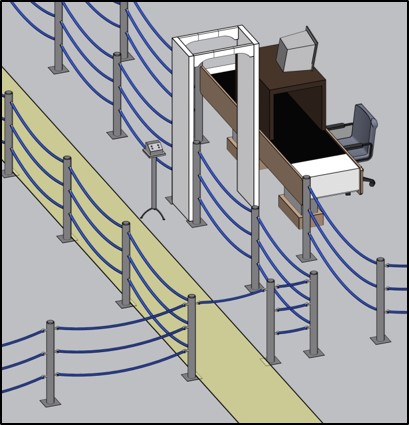
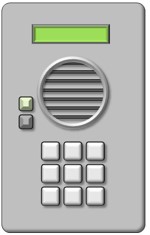
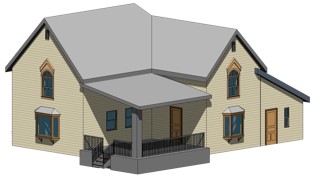
User Comments/Questions
Add Comment/Question